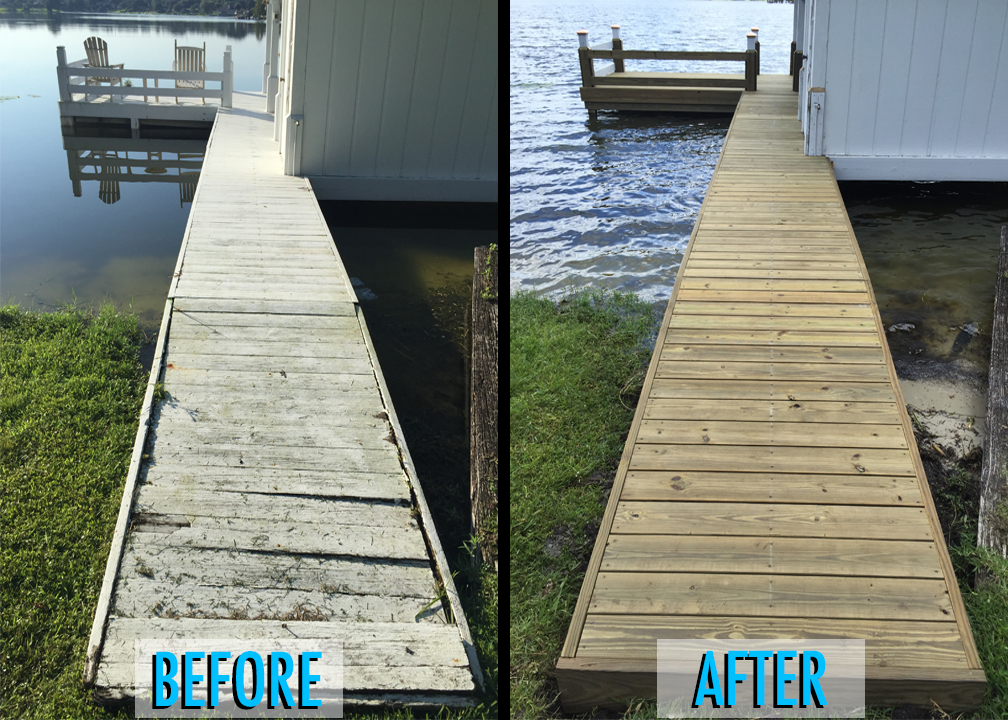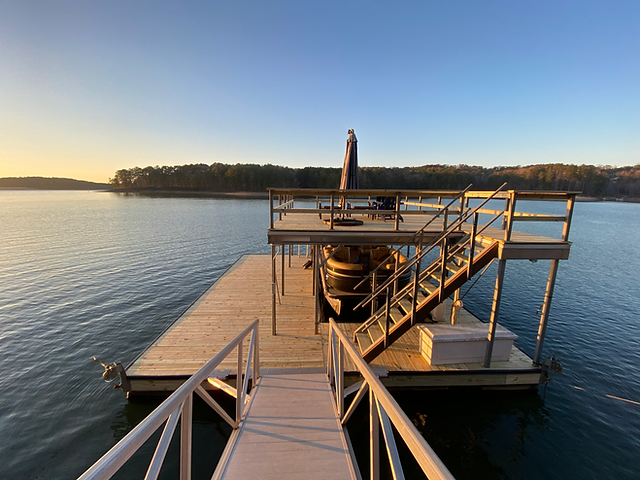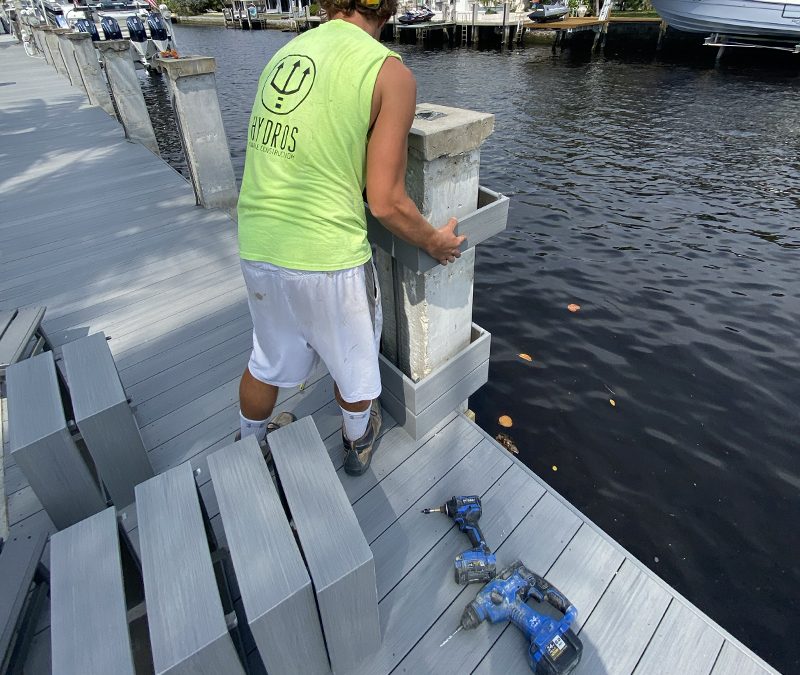Seasonal Preparations: When to Schedule Your Dock Repairs
Seasonal Preparations: When to Schedule Your Dock Repairs
Blog Article
Efficient Dock Fixing Techniques: Ensuring Structural Honesty
Ensuring the structural stability of anchors via efficient repair service methods is vital for the durability and security of marine centers. This includes a multi-faceted technique beginning with thorough evaluations utilizing innovative technologies like sonar devices and from another location ran vehicles (ROVs) to find both noticeable and concealed damages. Subsequently, choosing the right repair materials, such as corrosion-resistant alloys and composite materials, is critical for resilience. Structural reinforcement techniques, including the implementation of cross-bracing systems and load-distribution plates, play a crucial function in mitigating tension factors. Nonetheless, the significance of these methods ends up being obvious when discovering advanced fixing approaches and preventative maintenance approaches.
Analyzing Dock Damages
Examining dock damages is a crucial initial action in ensuring the architectural honesty and security of any type of docking facility. Secret aspects to analyze include the dock's foundation, pilings, outdoor decking, and equipment (Dock Repairs).
Architectural designers or qualified examiners normally execute these analyses utilizing specialized devices and methods. As an example, undersea assessments may utilize sonar equipment or remotely operated cars (ROVs) to discover submerged damage. Over water, aesthetic examinations are matched by utilizing wetness meters and other analysis devices to discover underlying concerns not immediately noticeable to the nude eye.

Finding Repair Materials
Selecting the suitable repair service products is an essential action in the dock reconstruction procedure, one that straight affects the long life and efficiency of the fixed framework. Product option should be driven by elements such as environmental conditions, load-bearing requirements, and compatibility with existing dock components. Wood is a conventional option for docks due to its natural resilience and aesthetic appeal. However, choosing the best sort of wood, such as pressure-treated lumber or normally rot-resistant types like cedar or teak wood, is essential to withstand aquatic settings.
In enhancement to wood, composite materials are significantly preferred because of their toughness and reduced maintenance demands. Compounds, generally made from a blend of plastic and timber fibers, provide superb resistance to rot, bugs, and UV damage. For steel docks, picking corrosion-resistant alloys such as galvanized steel or marine-grade light weight aluminum is vital to stop rust and make certain structural integrity in saline water problems.
Epoxy resins and marine-grade sealers are vital for repairing fractures and sealing joints, offering a water-proof barrier and improving the dock's total strength. By thoroughly picking top notch materials, dock repair services can achieve durable results, consequently guarding versus future destruction and ensuring risk-free, reputable usage.
Architectural Reinforcement Techniques
Efficient structural support methods are vital in making certain the security and durability of dock repair work. This method is particularly reliable for anchors subjected to heavy lots or rough ecological conditions.
Another essential strategy is the application of fiber-reinforced polymers (FRP) These products provide high strength-to-weight ratios and outstanding resistance to corrosion, making them ideal for enhancing concrete or wooden docks. FRP can be applied in sheets or strips and bound with epoxy materials to boost architectural honesty.
Supporting and anchoring systems likewise play a critical role in structural reinforcement. Cross-bracing, utilizing metal or wood light beams, can combat side pressures, lowering guiding and motion. Anchoring systems, such as helical piers or driven piles, supply a stable structure by transferring tons to deeper, a lot more stable dirt layers.
Finally, the integration of load-distribution plates can aid distribute weight extra uniformly throughout the dock's surface, minimizing localized stress and anxiety points. These strategies collectively ensure that anchors remain durable and safe, capable of standing up to the rigors of their operational atmosphere.
Advanced Repair Methods

Another advanced technique involves underwater welding, which allows for repairs to be conducted without the need to dewater the location. This approach is specifically helpful for resolving architectural concerns in immersed dock elements, making sure very little interruption to procedures. Improved welding methods, coupled with robotic systems, provide precision and integrity, therefore prolonging the life expectancy of the dock.
Additionally, cathodic defense systems are applied to stop rust in metallic dock frameworks. By utilizing sacrificial anodes or amazed current systems, these strategies successfully reduce the electrochemical processes that bring about material wear and tear.
Lastly, progressed tracking technologies, such as architectural health and wellness monitoring (SHM) systems, provide real-time information on the condition of dock frameworks. These systems allow proactive upkeep and timely treatments, eventually guaranteeing the long-term architectural stability of the dock.
Upkeep and Prevention
Maintenance and avoidance are essential concepts that underpin the long life and safety of dock frameworks. Routine inspections are extremely important, permitting very early detection of damage, possible weaknesses, and environmental effects. A proactive technique, involving regular checks for rust, rot, and architectural shifts, minimizes expensive repairs and lengthens the dock's operational life.
Safety nets need to include applying safety finishings to steel components to defend against rust and making use of treated timber to resist degeneration. Additionally, ensuring correct drainage and ventilation can stop water accumulation, which is a typical reason for architectural destruction. Incorporating quality materials and adhering to supplier guidelines during building and fixing phases likewise play critical roles in improving durability.

Training employees in dock upkeep best practices ensures regular application of preventative procedures. Leveraging website link technological advances, such as drones for examinations and sensing units for real-time tracking, can even more boost upkeep efforts. By focusing on upkeep and prevention, dock proprietors can make sure structural integrity, functional security, and affordable monitoring over the dock's life expectancy.
Conclusion
Finally, preserving the structural honesty of marine centers necessitates thorough dock view publisher site repair work techniques. Detailed assessments utilizing innovative tools uncover both noticeable and concealed damages, while the selection of ideal repair work products boosts sturdiness. Implementing architectural reinforcement techniques addresses stress factors effectively. Advanced repair service techniques, combined with normal maintenance methods, make certain the dock stays operational and secure under diverse environmental problems. Adopting these techniques dramatically prolongs the life expectancy and functionality of aquatic framework.
Ensuring the structural honesty of anchors via effective repair techniques is critical for the durability and security of marine facilities.Selecting the appropriate repair work materials is a pivotal step in the dock restoration procedure, one that straight affects the durability and performance of the repaired structure.Reliable architectural support methods are vital in ensuring the stability and long life of dock fixings. By focusing on maintenance and prevention, dock proprietors can make sure structural integrity, functional safety and security, and economical administration over the dock's lifespan.
In verdict, keeping the structural integrity of aquatic facilities necessitates thorough dock repair service methods.
Report this page